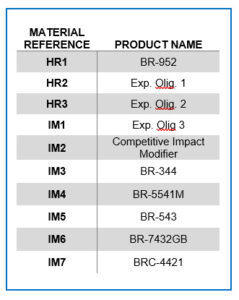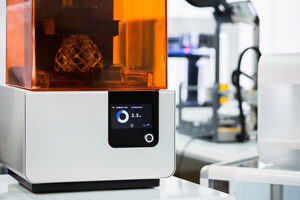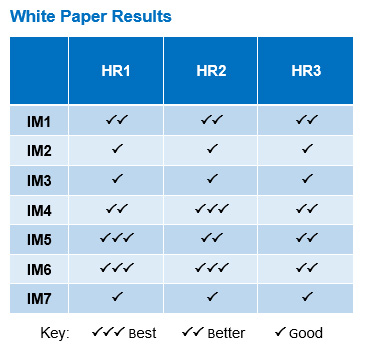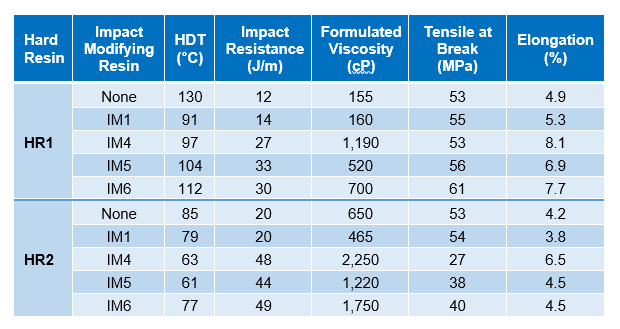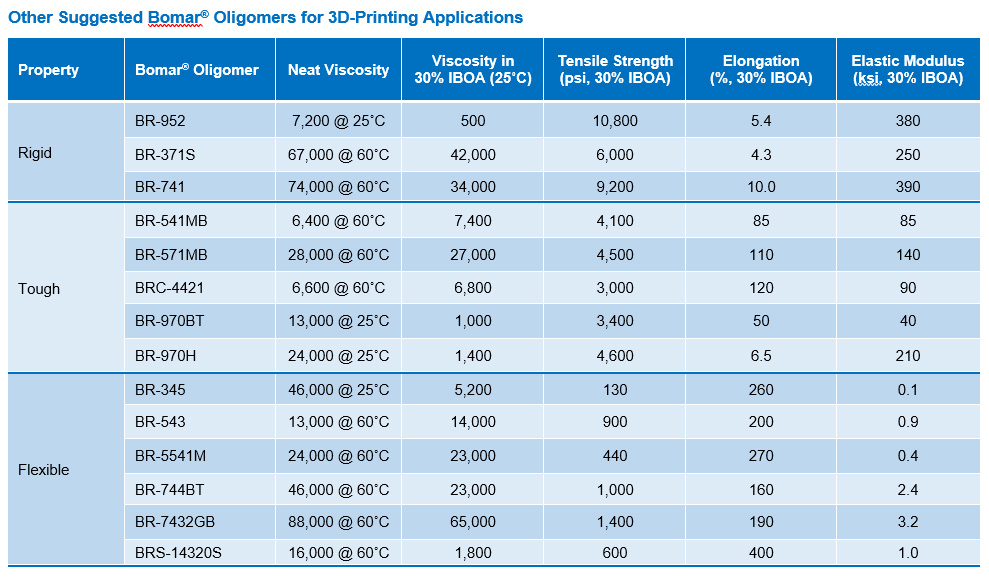
The Challenge
Dymax is creating solutions that allow photopolymer-based 3D printing resins to meet or exceed the capabilities of thermoplastic materials such as polycarbonate or ABS, targeting superior impact and temperature resistance properties. The goal is improvements in impact strength while maintaining a high Heat Deflection Temperature (HDT).
The Trade-Off
Stronger UV-curable materials with high HDTs are generally low in impact resistance, being more inflexible or brittle due to a high degree of cross-linking in their molecular composition. On the other hand, high molecular weight materials with low crosslink density typically have a low HDT or are too high in viscosity to properly 3D print. To solve this persistent problem and achieve advancement in balancing these properties, chemists need to determine the best formulation approach to attain this balance of properties within a UV-cured polymer network.
To identify the best options for 3D printing oligomer development, Dymax explored one concept for improving impact resistance by modifying hard, highly crosslinked networks with flexible impact-modifying resins. Dymax tested three experimental Hard Resins (HR) both alone and together with several Impact Modifying (IM) materials in a model formula. These materials were categorized by functionality and molecular weight, and included a range of backbone chemistries.
Printability
As Dymax researches and develops materials that balance HDT and impact resistance, we also must consider the limitations of the 3D printing process, including low formulation viscosities, limited light-source intensities, and cure dynamics of the 3D printing process. Formulators must also balance the need to achieve fast cure speed with the desire to minimize part shrinkage in order to achieve excellent print resolution and dimensional stability.
The formulations of HR/IM combinations with the best balance of impact resistance and HDT properties were subjected to additional testing to identify potential relationships to tensile strength and elongation. Materials with lower functionalities and molecular weight showed higher tensile strengths and somewhat reduced elongation. In some cases, the HR materials are able to be toughened through the IM modification with an increase in elongation as well as a constant or increased tensile strength.
The Results
The data gathered in testing several urethane (meth)acrylate resins has allowed Dymax to expand the reach of light-curing 3D printing processes and gain powerful insight into improving both HDT and IM simultaneously, rather than simply sacrificing one for the other. As industry leaders in the chemistry, mechanical systems, and formulation expertise needed to provide total solutions to our 3D printing clients, Dymax will apply these learnings to continue to push our understanding and development even further. Download our new white paper.
Discuss this article and more on the 3DPrintBoard or comment below to tell us what you think.
Subscribe to Our Email Newsletter
Stay up-to-date on all the latest news from the 3D printing industry and receive information and offers from third party vendors.
Print Services
Upload your 3D Models and get them printed quickly and efficiently.
You May Also Like
The Dental Additive Manufacturing Market Could Nearly Double by 2033, According to AM Research
According to an AM Research report from 2024, the medical device industry, specifically in dentistry, prosthetics, and audiology, is expected to see significant growth as these segments continue to benefit from...
Heating Up: 3D Systems’ Scott Green Discusses 3D Printing’s Potential in the Data Center Industry
The relentless rise of NVIDIA, the steadily increasing pledges of major private and public investments in national infrastructure projects around the world, and the general cultural obsession with AI have...
AM Research Webinar Explores Continuum’s Sustainable Metal Additive Manufacturing Powders
Metal additive manufacturing (AM) powder supplier Continuum Powders is working to develop solutions that empower industries to reduce waste and optimize their resources. An independent life cycle assessment (LCA) of...
3D Printed Footwear Startup Koobz Lands $7.2M in Seed Round
California-based Koobz is focused on reshoring the U.S. footwear supply chain with advanced manufacturing processes, including 3D printing. The startup just announced that it has added $6 million to its...


